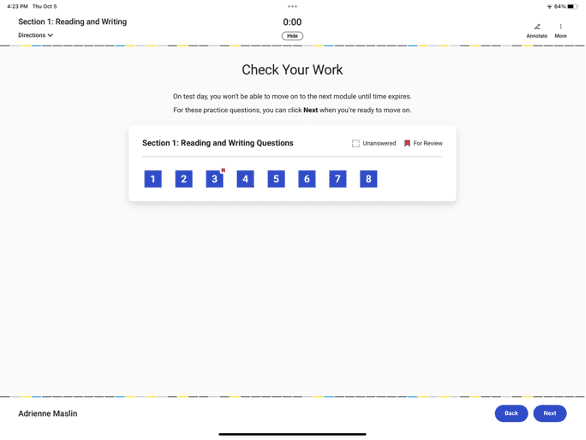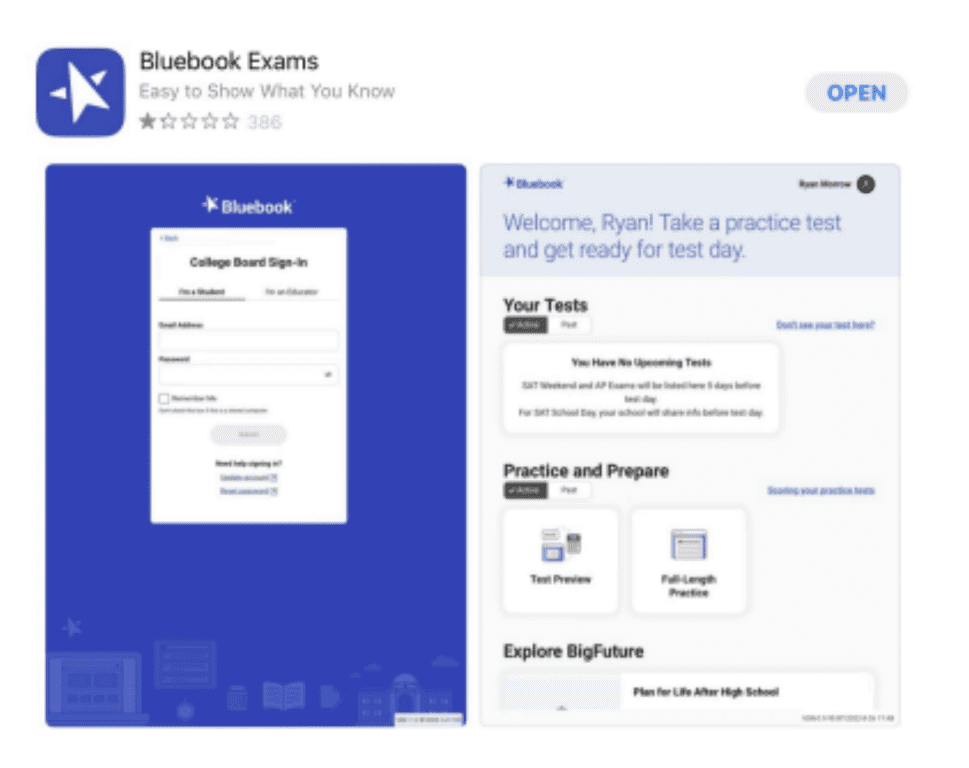College Bound: Ready for the Digital SAT?

Audio By Carbonatix

We-Ha.com will be publishing a series of essays/blogs/reflections on the issue of going to college – primarily a set of thoughts and musings, along with some practical advice, intended to support students and parents as they embark on this journey. While many of our readers are experts in this topic, many others are less knowledgeable and have little outside support. We hope this is helpful to all readers as they go through the various stages of getting into and getting something out of college.
By Adrienne Leinwand Maslin
The SAT is Going Digital: Will You Be Ready?

Adrienne Leinwand Maslin. Courtesy photo
I ended the last column with this statement: “If you’ve been reading these columns, you know that the college application process is arduous, anxiety-producing, highly specific, complicated, and changes more frequently than we would like it to. No sooner do we think we understand what we need to do, the requirements change. Either because the law requires it or because colleges change their policies.”
There is another player in the college admissions process that I had forgotten about in the last column. It is neither the law nor individual colleges. It is the College Board. And the change it is making? The SAT is going digital!! Of course, first you have to make the decision about whether to take the SAT since so many colleges no longer ask for test scores at all and others are test optional. But I suspect many of you will choose to take it and, if you do, here’s what you need to know about the new digital SAT.
First off, it has some unique features. Perhaps the most unique is that the test is adaptive by module. What does this mean? Each section of the test – reading/writing and math – has two modules or segments, each of them separately timed. To be adaptive means that the difficulty level of the second module in each section is based on how well you perform on the first module. Depending on your performance, the second module may be either easier or harder than the first although according to several sources, you will not be able to tell how well you did on the first module based on the difficulty of the second module. If you take the more difficult second module you will be given more points for each correct response. Because the sections are adaptive by module rather than by question, students can skip questions in a module and return to them later.*
A complimentary feature of the digital SAT is that it allows you to mark a question within the module you are working on that you wish to return to. Similarly, you can skip a question completely and it will be noted for you. At the end of the module, a screen will appear that looks something like this:

Screenshot
Another new aspect of the exam is that for multiple choice questions, you can electronically strike answers that you know are incorrect and wish to visibly eliminate from consideration. This is a very helpful feature. However, when I was taking the practice SAT, it took me a little while to figure out how to do this. I took the practice test on a tablet and the first few times using this feature I found I was accidentally selecting what I considered to be an incorrect choice as my correct answer instead of striking it from review. I had to touch the screen at exactly the right spot for this to work. Nonetheless, it is a nice feature to have if you become familiar with how it works.
A new feature of the reading/writing section is that there will no longer be lengthy, multi-paragraph essays with multiple questions associated with each of them. Rather, each question will be based on its own short paragraph.
The website Ivy Experience provides a very informative analysis of the digital SAT’s content saying it is the same as the paper and pencil exam but that the frequency of topics has changed. Below is their analysis:
Reading and Writing:
- Craft and Structure (~28%)
- Information and Ideas (~26%)
- Standard English Conventions (~26%)
- Expression of Ideas (20%)
Math:
- Algebra (~35% of questions)
- Advanced Math (~35%)
- Problem-Solving and Data Analysis (~15%)
- Geometry and Trigonometry (~15%)
The Assessment Framework makes no mention of imaginary numbers in the Math content, and their omission (assuming it is deliberate in the Framework) would be a noteworthy departure from the current paper and pencil test.
The Desmos graphing calculator will be embedded in the digital SAT although students may bring their own calculator if they prefer. Calculators may be used throughout the math portions of the test.
Like the hard copy version of the SAT, each segment or module is timed and you cannot move on to the next module until told to do so by the proctor. The scoring of the digital SAT will also be the same as with the current exam: 800 points for the math section, and 800 for reading and writing for a total of 1600 points. The total time of the digital SAT has been shortened, however, and the total exam time will be approximately 2 hours and 15 minutes.
Students will be allowed to bring their own computers or tablets to the exam although most testing sites will have devices available for those who require them. It is a good idea to check with your testing site about this before test day. The digital SAT is taken using the Bluebook testing app which is available to be run on Windows, Macs, an iPad, or a school-provided Chromebook. I tried it out on an iPad and, except for my confusion about striking through multiple choice items I was no longer considering, it worked very well. The Bluebook app must be installed prior to your testing day.

Bluebook app. Screenshot
Additional advice from the College Board includes being sure your computer or tablet can connect to Wi-Fi, fully charging your device before the exam, and bringing your power cord in case you should run out of power. Your computer will have to be on for three to four hours. It may also help you to know that all of your exam responses are saved in the event your computer crashes, there is a power outage at the testing site, or some other situation occurs.
The digital SAT will be available to students in the U.S. in spring 2024. The first testing date will be March 9 and students must register by Feb. 23, 2024. There is an excellent video about the digital SAT that was produced by The Princeton Review and which can be accessed here: https://www.princetonreview.com/college-advice/sat-digital-exam.
If I may offer a suggestion, do some SAT practice exams on the Bluebook app to get accustomed to the app and to the digital exam. Practicing will also allow you to get used to using the Desmos graphing calculator if you choose to use it or if you forget to bring your own calculator with you to the exam. And, if possible, do your practicing on the computer you will use to take the SAT. While practice doesn’t always make perfect, it sure helps! Good luck!
*Note: Some tests – not the SAT – are adaptive by question, meaning that the difficulty level of the subsequent question is based on the answer to the previous question. In a test like this, students must answer questions sequentially
Adrienne Leinwand Maslin recently retired from a 45-year career in higher education administration. She has worked at public and private institutions, urban and rural, large and small, and two-year and four-year, and is Dean Emerita at Middlesex Community College. She has held positions in admissions, affirmative action, president’s office, human resources, academic affairs, and student affairs. Maslin has a BA from the University of Vermont, an MEd from Boston University, and a PhD from the University of Oregon. She is presently creating a TV/web-based series on life skills and social issues for 9-12 year olds believing that the more familiar youngsters are with important social issues the easier their transition to college and adulthood will be. Information about this series as well as contact information can be found at www.shesroxanne.com.
Like what you see here? Click here to subscribe to We-Ha’s newsletter so you’ll always be in the know about what’s happening in West Hartford! Click the blue button below to become a supporter of We-Ha.com and our efforts to continue producing quality journalism.



